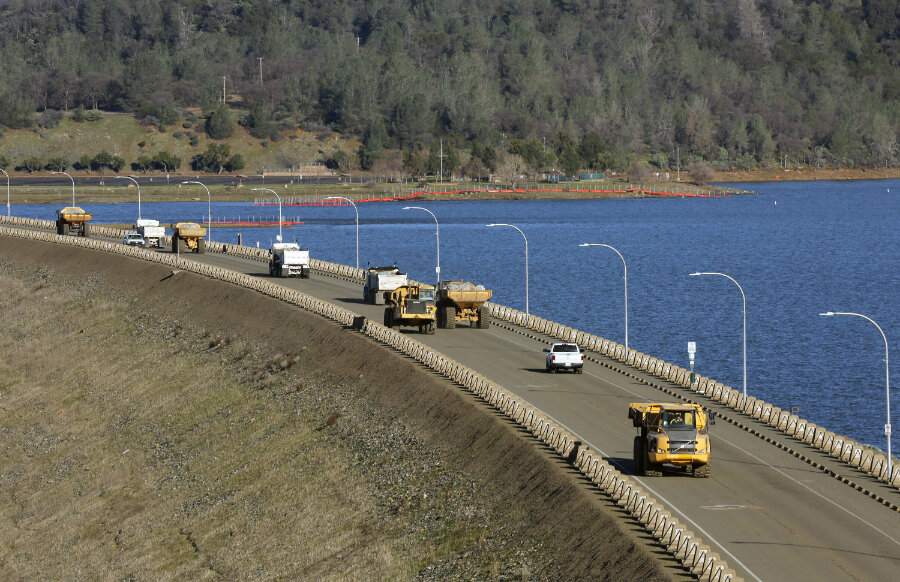Repairs to Oroville dam continue as residents await next major storm
Loading...
Efforts to shore up Oroville dam spillways have helped to bring the water level down, officials say. That means the almost 200,000 residents evacuated on Sunday can head home – but many aren’t making plans to do so yet.
On Tuesday, evacuation orders were lifted for residents who live below the country’s tallest dam. But officials warned that residents could be asked to evacuate again later in the week, as a small series of storms expected to start Wednesday could test the effectiveness of repair efforts.
“There is the prospect that we could issue another evacuation order if the situation changes and the risk increases,” Butte County Sheriff Kory Honea said Tuesday.
Some residents are choosing to make the journey home, despite evacuation traffic that extended a one-hour drive into a six-hour journey on Sunday and could make it difficult to leave Butte County again. Others are staying put – at least for now.
“I’m not trying to risk traffic, being stuck in floods. I’m safe where I’m at,” Donald Azevedo, a Butte County resident staying at an emergency shelter, told the Associated Press. Along with more than 30 relatives, he planned to return home after the storms expected to hit this week.
The Lake Oroville reservoir captures water in northern California, distributing it to agriculture, industry, and homes across the state. Following recent precipitation events, which had filled the lake almost to bursting, the main spillway was being used to let water run off over the weekend, when a growing hole in the concrete made it almost unusable.
That came as a shock to residents, who had been assured that the dam was working well. Even more surprising was the order to evacuate Sunday, when the dam’s unpaved emergency spillway looked ready to give way. Within 40 hours of being pressed into service, the rarely used emergency spillway was eroding rapidly.
“We were told repeatedly that the spillways and the dam were all fine,” said Eric Wesselman, executive director of advocacy organization Friends of the River, according to Reuters. “The events unfolding at Oroville should be a wake-up call that there are thousands of unsafe dams and levees in the country.”
An inquiry is already underway, The Christian Science Monitor reported on Tuesday, while repairs will begin in earnest in the spring. Fixing the main spillway could cost as much as $200 million, said Bill Croyle, acting director of the state Department of Water Resources, AP reported.
But first, the spillways have to handle inflows from a series of upcoming storms. And when this winter’s record snowfall starts to melt, that water, too, will flow into the Oroville dam.
Officials are optimistic that temporary repair efforts will help keep the spillways usable. Construction crews are shoring up the emergency spillway, dumping 1,200 tons of rocks and other material on it every hour, and concrete slurry is being used to help keep the rocks in place, the Los Angeles Times reported. California will get some assistance from the Federal Emergency Management Agency, Gov. Jerry Brown announced late Tuesday.
The evacuees who are now returning home will remain attuned to the situation, they say.
“We’re all coming back [to] pack and be ready this time,” Rod Remocal, who lives west of the Oroville dam, told AP. “This time we’re going to be on call like they said.”
This report contains material from the Associated Press and Reuters.








